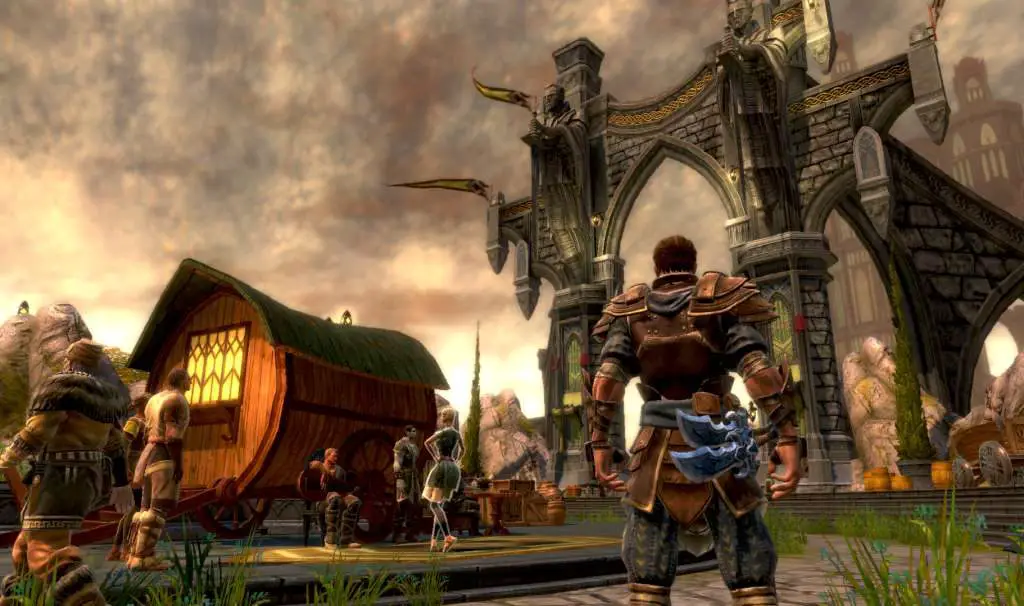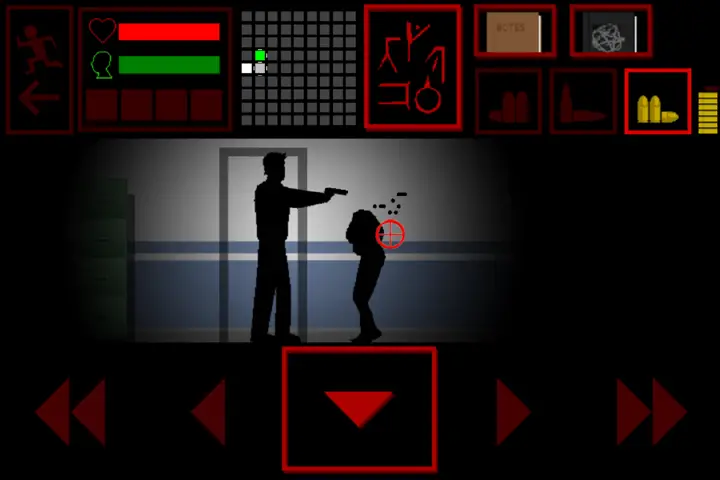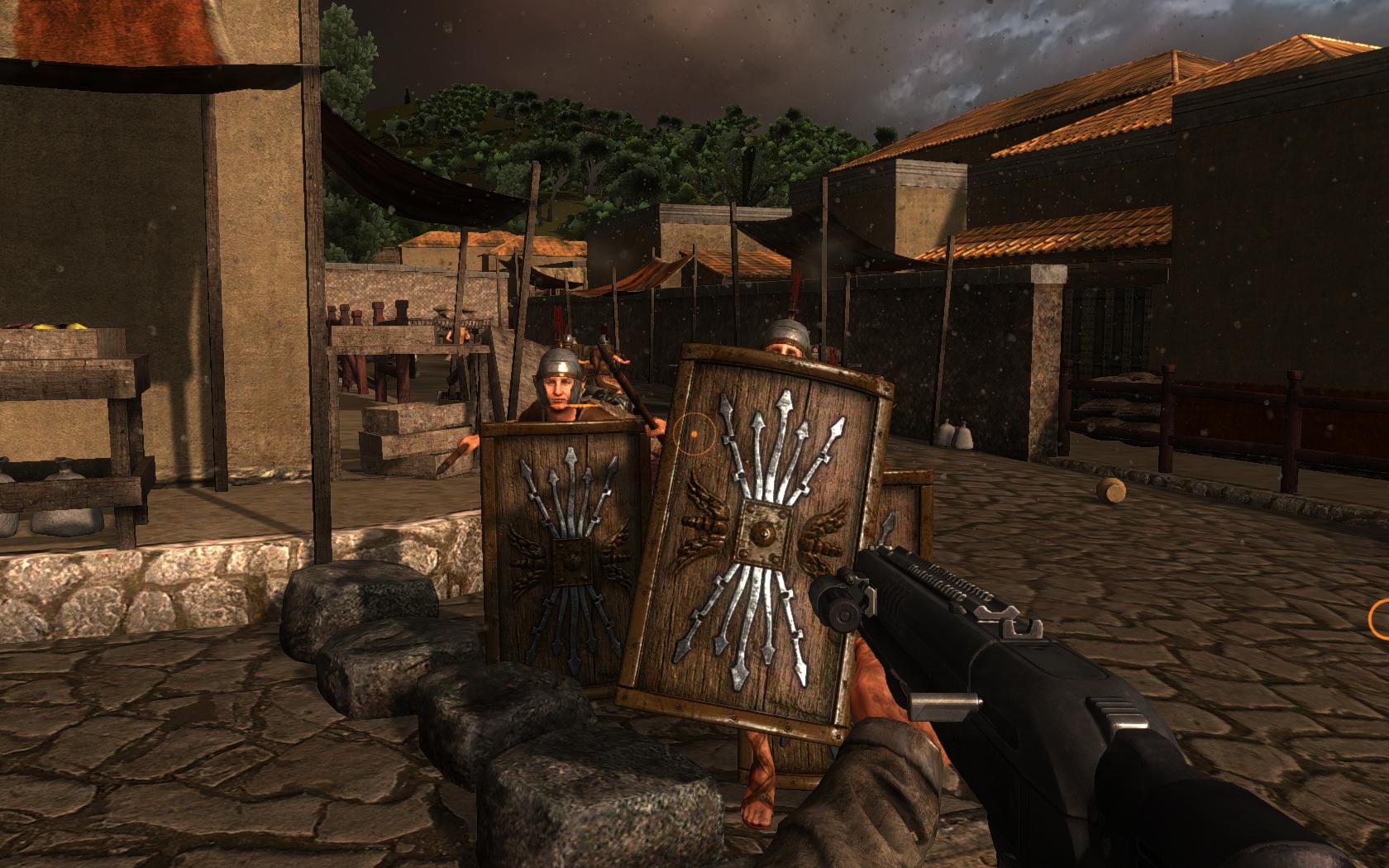So, E3 2017 is over. If you missed any big announcements, TecRadar ran a pretty good overview that’s worth checking out (after you read this; I see you cursoring over the link). I’m personally excited for “Wolfenstein II,” and here’s to hoping “Far Cry 5” and “Assassin’s Creed Origins” are as fun to play as they are pretty to look at. And yes, I am deliberately choosing not to mention the latest reason I’m seriously beginning to question whether or not I picked the wrong side in the console wars. It’s too bad that we’ll have to wait until next year for most of them. Unless they all end up sucking. Considering at least one of the companies involved, that could still happen.
Either way, here are three older games that definitely don’t suck and can be enjoyed now.
1. “Darkest of Days”
The oldest game of the three, released in 2009, “Darkest of Days” hasn’t aged well in the graphics department. While this first-person shooter may not have revolutionized the genre, it stands out for having a fairly unique (for a first-person shooter) premise.
The player takes control of Alexander Morris, the only survivor of the battle of Little Bighorn, who, due to a paper work mix-up, disappeared into the ether as far as history is concerned. He is rescued at the last minute by an agent of Kronotek, an organization dedicated to studying history through the use of time travel. It turns out that their founder has disappeared and a shadowy agency is attempting to subtly alter history for unknown reasons. In response, Kronotek recruited Morris and other “ghosts of time” in order to set things right.

The basics of gameplay are pretty standard, with the player being limited to two weapons plus (in time periods that allow it) grenades. Health regenerates, although not as quickly as in some games, so combat is still a challenge. What makes the gameplay different from many first-person shooters are the weapons themselves. While the game features some standard sci-fi armaments and a few more creative ones, they aren’t what Morris will be using for most of the game. Instead, the developers painstakingly recreated period weapons for most of the eras the player travels to. For this reason, it is the only FPS I’m aware of to contain muskets. The nineteenth century and World War I era firearms force the player to take a slower, more thoughtful approach to combat. On the rare occasion when the game does let you whip out some twenty-second century hardware, players get to live the spectacle of running through the battle of Antietam with a submachine gun and incinerating Roman legionnaires with a death ray.
You have not lived until you have mowed down an entire column of Confederate infantry with a submachine gun.
The game isn’t perfect, as there are times when it can be hard for the player to tell what they are expected to do, the story has some plot holes that get worse the more you think about them and the narrative spends a majority of its runtime in two of the five eras. That doesn’t stop it from being a fun and unique experience though. If you have a PC running Windows Vista or newer (so, basically if you have a PC) or didn’t throw out your old Xbox 360, it’s worth a look.
2. “Kingdoms of Amalur: Reckoning”
Is it just me, or are all fantasy games starting to look like either “Skyrim” or “Game of Thrones”? “Kingdoms of Amalur: Reckoning,” on the other hand, isn’t trying to recreate someone else’s unrepeatable success. Instead, it inhabits an original world created by bestselling author R. A. Salvatore. The world of Amalur feels like a unique invention rather than just another medieval England lookalike.
Instead of an attempt at photo-realism that would look terrible a few years down the road, they hired veteran comic book artist Todd McFarlane to be the game’s art director. He captures the spirit of high fantasy while adding his own personal touch—everything is big and elaborate without being over-designed. The player can look out over the sprawling landscape (which admittedly requires a bit of camera wrangling to accomplish), and feel like your character is standing in a vivid world of magic, rather than a drab one that clams to be. As a side note, a lot of RPGs have buff male characters but female characters who look like ninety-pound waifs. “Kingdoms of Amalur” gives its female player characters a more athletic build. I don’t mean that as part of any larger statement, I just thought it was neat and slightly ironic since many “more realistic” games don’t do that.

After creating a character, the game starts with the player waking up in a mound of corpses. It turns out some gnomes, who have Welsh accents and Roman everything else, have been experimenting with raising the dead. Soon it is revealed that because the player’s character already died, they are the only person who doesn’t have a predetermined fate. This means that they are the only one who can defeat the Tuatha, a race of magical beings who seek to rid the world of all mortals.
In addition to the main plot, there are a huge number of side quests and five joinable factions. A common quirk with many RPGs is that the side quests often have absolutely nothing to do with the main story. While some of the side quests in “Kingdoms of Amalur” fit that description, many relate back to the main plot in some way. For example, one of the first joinable factions to become available is a group of mercenaries. After one standard mission that predictably goes horribly wrong, the player discovers that a cult is trying to summon a powerful daemon because they believe it can defeat the villains of the main plot.
Combat in “Kingdom’s of Amalur” is built around timing attack rather than button mashing. While there are occasional quick-time events, there are never any “press X not to die” moments, so the scenes avoid becoming annoying. Instead of having rigid character classes, the game uses what it calls Fates, which the player can unlock and switch between at any time. The three basic ones follow the standard fighter, mage and rogue archetypes, but there are a variety of options for players who want to mix and match. Each of the nine weapon types has a distinct feel, and none of the classes feel over- or under-powered. The game world is neither linear nor open, instead taking a hybrid approach. There are five regions separated by loading screens and several sub areas. While the sub areas are not exactly seamless, they are all interconnected.
The game isn’t perfect; the narrative is awkwardly paced at times, and item drops are randomized, so it can be hard to unlock the various set bonuses. That said, it’s fun, fast-paced combat and elaborate, fully realized world makes it a must try for RPG fans.
Oh, and if anyone is wondering why 38 Studios never released another game if this one was so great, there’s actually an interesting story behind that. “Amalur” was supposed to help fund a “World of Warcraft”-style MMO using the same setting. That game ended up turning into a sinkhole that, aided by CEO and former Red Sox pitcher Curt Schilling’s mismanagement, swallowed up $200 million, most of which Schilling borrowed from the state of Rhode Island. The disaster forced the company to declare bankruptcy, and forever proved that an amazing product from a brilliant team is not enough to make up for managerial incompetence.
3. “The Consuming Shadow”
“Consuming Shadow,” by novelist and game critic Ben “Yahtzee” Croshaw, stands out for being quite possibly the only example of a side scrolling horror-survival game. The player controls one of four unlockable paranormal investigators as they try to stop an ancient god from returning to Earth. The world map is a procedurally generated version of England, so every play-through is different. That’s good, because there’s no saving, thus every death means starting over. This forces the player to make a judgment call every time a new area is encountered. A given location may contain important clues, but also may cost them precious health and ammo. This complements the dark and oppressive atmosphere to create an experience that’s tense, if not in the strictest sense scary.

Gameplay is divided between text-based interactions and side scrolling dungeons. The player also needs to gather clues that help determine the returning god’s identity, which takes the form of an ongoing logic puzzle that the player must complete at least partially. The name and nature of the god is randomized each time to prevent repeat play-throughs from getting too easy. Things are further complicated by a sanity mechanic similar to those found in other loosely Lovecraftian-inspired games, such as “Amnesia: The Dark Descent. The more sanity is lost, the more likely it is for the player character to attempt to kill themselves, and preventing it becomes harder each time it happens.
While “The Consuming Shadow” might not be for everyone, it’s a good choice for anyone looking for an offbeat horror-themed adventure. Besides, you could buy all three of these games for less than the cost of one new release and have more than enough to keep you occupied for the rest of the year.














